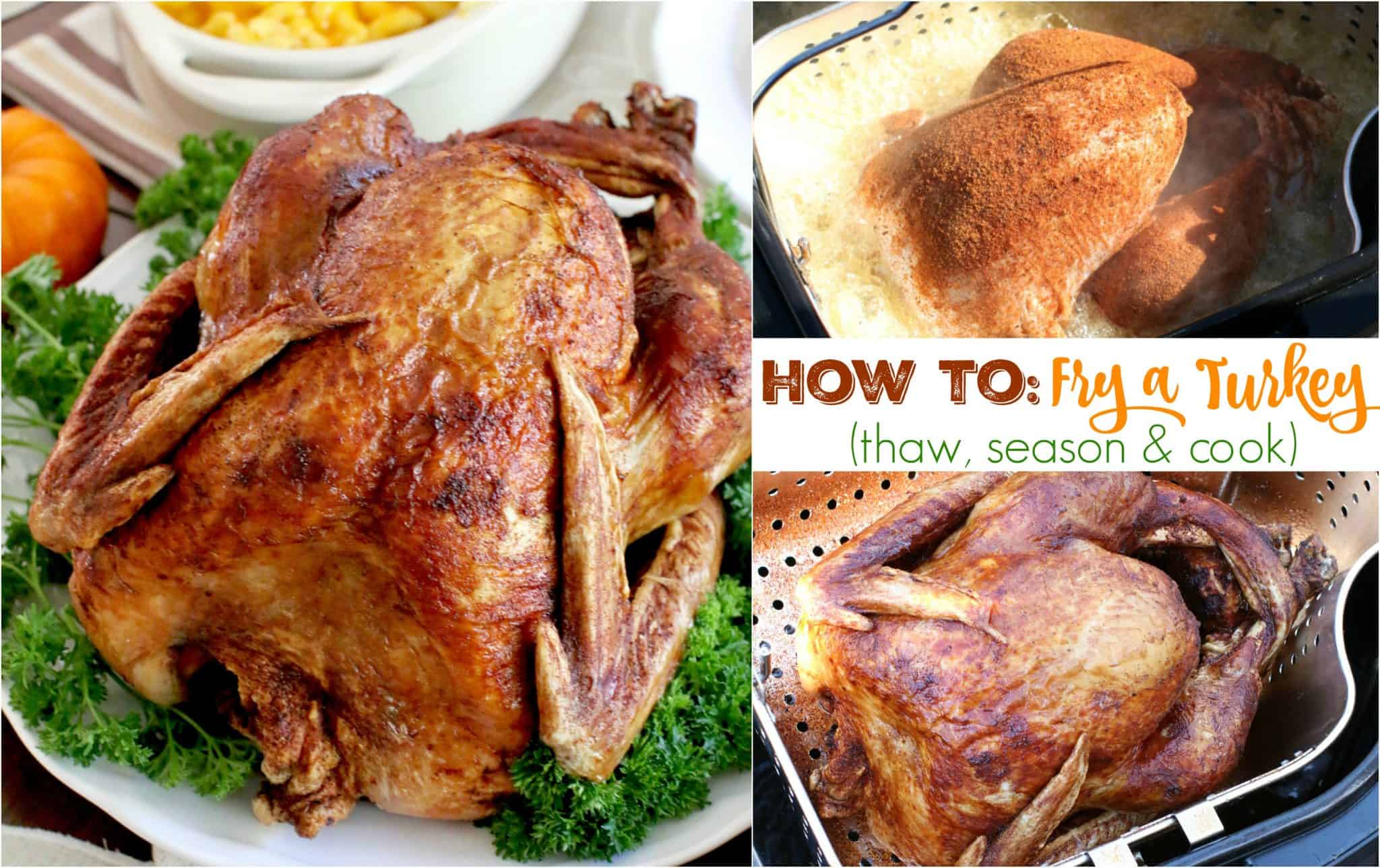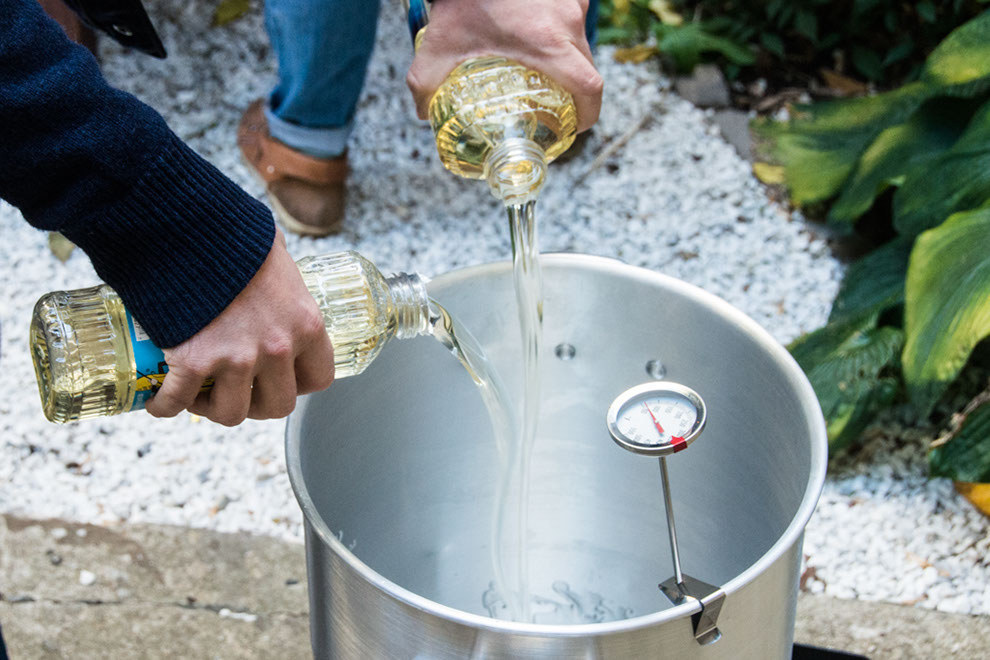Frying a whole turkey has become an increasingly popular cooking method especially around the holidays. The appeal is understandable – who wouldn’t want a beautifully bronzed, crispy-skinned bird ready in less time than roasting? However, as appetizing as it seems, deep-frying an entire turkey comes with an array of risks and dangers that make it an incredibly perilous endeavor.
As a cooking blogger who strives to provide my readers with safe and foolproof recipes, I cannot recommend trying to fry a whole turkey at home. Through my research, I’ve learned that the process is fraught with hazards at every turn. In this article, I’ll outline the primary reasons why you simply can’t just fry a turkey without taking major precautions – and why it’s better to stick to safer alternatives.
Why Is Frying a Turkey So Dangerous?
There are several key factors that make deep-frying a turkey hazardous:
-
Massive quantity of hot oil – Turkey fryers require gallons upon gallons of oil heated to 350-400°F. This amount of scalding hot liquid sets the stage for disaster.
-
Open flame – Most turkey fryer setups involve an open flame from a propane burner. This introduces a serious fire risk.
-
Potential for oil to ignite – If the oil overheats past its smoke point, it can burst into flames rapidly.
-
Instability – Lowering a large awkward turkey into a fryer can cause it to tip and spill hot oil.
-
Risk of explosions – Any ice or moisture on the turkey leads to dangerous splattering and eruptions.
-
Difficulty estimating oil levels – It’s challenging to know precisely how much oil is needed to submerge a turkey safely. Too much oil heightens the spillage and fire risks.
-
Lack of experience – Without proper training, frying a turkey can easily lead to accidents. It’s not as simple as just dunking a bird in hot oil.
-
Improper fryer setups – Homemade and unstable equipment escalates the hazards significantly.
Let’s explore these dangers in more detail.
The Many Ways Frying a Turkey Can Turn Deadly
Fire Hazards
Perhaps the biggest risk of frying a turkey is the high probability of fires breaking out. The combination of gallons of hot oil and open flames is treacherous, especially in a backyard environment. If the oil bubbles over or splatters due to ice or moisture on the turkey, it can ignite rapidly on the burner. The more oil that overflows, the bigger the fire can grow. Fires can also erupt if the oil isn’t monitored carefully and exceeds its smoke point. A grease fire fueled by gallons of oil can blaze out of control astonishingly fast. According to NFPA data, deep fryer fires cause an average of 5 deaths, 60 injuries, and over $15 million in property damage every year.
Explosive Spattering
When moisture and ice come into contact with scalding hot cooking oil, it causes violent spattering and bubbling. Any amount of ice or water remaining inside or on the surface of a turkey can lead to explosive oil eruptions when lowered into the fryer. This can cause severe burns to anyone nearby. It only takes a tiny bit of moisture for this dangerous reaction to occur. Ensuring the turkey is 100% thawed and patted bone dry is critical.
Tip-Over and Spillage Hazards
The act of lowering a 10-15 lb turkey into a fryer full of hot oil can have perilous consequences. As the heavy bird is lowered in, it can cause the fryer to tip over, spilling the scalding contents everywhere. This leads to oil burns and the potential for the ground surfaces to catch fire if the oil spreads. The turkey also needs to be gradually and gently lowered in to displace oil slowly without it breaching the top of the fryer.
Inaccurate Oil Levels
Frying a turkey requires sufficient oil to submerge it completely while leaving some room at the top of the pot. Estimating precisely how much is tricky. Not using enough oil will lead to uneven cooking and potential burns. But adding too much oil increases the hazards dramatically – with more oil to bubble over, catch fire, or cause tipping from excess weight.
Lack of Training and Experience
There are nuances to safely frying a turkey that first-time attempters are unaware of. Without proper training or guidance, the margin for error and accidents is huge. Frying a turkey is very different than typical deep frying. From thawing and prepping the bird, to gradually lowering it in, monitoring oil temps, and properly flipping halfway – inexperienced cooks boost their chances of mishaps.
Inferior Equipment
Turkey fryers specifically engineered for frying whole birds are safest due to design features like sturdy bases, proper oil capacity, and burners that prevent overheating. Homemade rigs using improvised pots are unstable and prone to tipping, oil boiling over, or other equipment failures. The pot must be tall enough to submerge a turkey while preventing overflow.
4 Safer Ways to Cook a Turkey
Given the significant risks associated with deep frying a turkey, what are the alternative preparation methods? Here are some much safer options that still yield delicious, flavorful results:
Oven Roasting
Roasting a turkey in the oven is the traditional, time-tested approach perfected over generations. While it requires more time than frying, it’s reliable, easy, and avoids all the pitfalls of dealing with gallons of scalding oil.
Smoking
Smoking imparts incredible flavors into meat low-and-slow. While specialized gear is needed, it’s a hands-off process compared to frying. The indirect heat avoids oil splatter issues.
Grilling
Cooking a turkey on a grill over indirect heat lets you infuse delicious smoky notes while avoiding oil. It requires more monitoring than oven roasting but gives great flavor.
Oil-Less Turkey Fryers
Special indoor turkey fryers use radiant heat to mimic fried flavors without submerging in oil. The enclosed, ventilated design contains heat and oil splatters safely.
Turkey Frying Safety Tips (If You Must Fry)
I don’t recommend frying a turkey, but if you absolutely must try it, these precautions are crucial:
- Use a commercial turkey fryer designed specifically for turkeys, not a improvised pot
- Fry outdoors only on flat, stable surfaces away from structures
- Do not overfill the fryer with oil
- Slowly lower and raise the turkey using proper hooks
- Wear protective gloves and garments to avoid burns
- Monitor oil temp continuously to prevent overheating
- Thaw and dry turkey completely before frying
- Turn off burner when not actively frying
- Have proper fire extinguisher on hand
- Keep children and pets away from the fryer
- Avoid distractions and never leave a frying turkey unattended
Even with safety measures, frying turkey comes with inherent risks not worth taking. Stick to oven roasting or grilling to eliminate the hazard while still enjoying tender, juicy holiday turkey.

Add the frying oil.

Submit a recipe to Tasty!
Have a recipe of your own to share?Submit your recipe
How to Deep Fry a Turkey the Safe & Easy Way | You Can Cook That | Allrecipes.com
FAQ
Why can’t you deep-fry a turkey?
Why can’t you fry frozen food?
Why do Americans fry turkey?
How to safely deep-fry a turkey?
What happens if you fry a Turkey in a frying pan?
The icy bird creates a ton of steam that bubbles the oil over the sides of the pot and into the fire of the fryer burner below. From there the fire can spread and catch the propane tank on fire as well. Wet turkeys also cause oil to splatter, which can cause burns and fires.
Is frying a Turkey a good idea?
An under-appreciated benefit of frying the turkey is hanging out outside from the time you heat the oil until the turkey is done cooking. (This is a good way to get a break from the hot kitchen or to avoid your family if the holidays are stressful!)
What happens if you fry a Turkey in a pot?
Surely, if that pot holds a chicken, it can hold a turkey and five gallons of oil, you think. But when it comes time to fry, you either can’t get the oil hot enough or you try to cram the turkey into a too-small pot, causing an oil spill that catches fire. You’ve now become one of those YouTube horror stories.
Can you fry a Turkey outside?
Choose a fryer designed specifically for frying turkeys outside (or inside). Thaw the turkey completely, remove giblets, separate the legs, and pat the turkey dry before placing in oil. Don safety gear such as long, heavy-duty oven mitts and a lead apron, and have thermometers, a fire extinguisher, and other tools close at hand.
